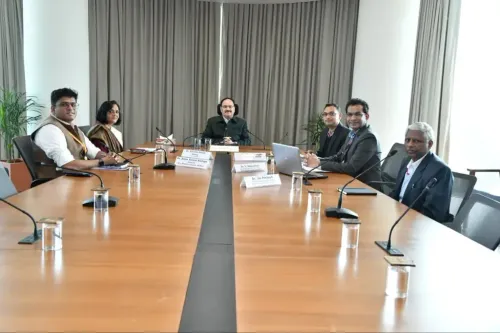Will India’s Ultra-Rich Population Surge By 11-15% CAGR Through 2034?

Synopsis
Key Takeaways
- India's HNW and UHNW population is set for substantial growth through 2034.
- Luxury brands must adapt to a more affluent and younger demographic.
- Craftsmanship and personalization are becoming critical in the luxury sector.
- Aspirational consumers are pulling back, impacting market dynamics.
- Top-tier clients are increasingly driving luxury expenditures.
New Delhi, July 24 (NationPress) The population of High-Net-Worth and Ultra-High-Net-Worth individuals in India is projected to expand at a compound annual growth rate (CAGR) of 11–15 percent through 2034, marking it as a significant market for global luxury brands, as indicated by a recent report.
As wealth accumulation accelerates and a youthful, brand-savvy demographic emerges, luxury brands are preparing for enhanced local engagement, according to the Boston Consulting Group's latest findings.
The essence of luxury is shifting towards a renewed focus on craftsmanship, personalization, and intimate experiences. This shift is particularly relevant in emerging markets like India, where aspirations increasingly align with financial capability, the report asserts.
Nonetheless, the report highlights a notable transformation within the luxury sector.
For the first time in over ten years, the Personal Luxury Goods Market is encountering a growth slowdown, with predictions of flat or slightly negative growth by 2025.
Aspirational consumers, who once formed the entry point to luxury, are now retracting, while high-end clients are poised to become crucial for long-term value generation, the report indicates.
"The global luxury market is at a pivotal juncture—while aspirational buyers are stepping back, elite clients, constituting merely 0.1 percent of the population, account for 23 percent of total luxury expenditures," the report states.
Once responsible for 70 percent of the luxury market, aspirational buyers have seen their share decrease by nearly 15 percentage points due to rising affordability concerns, as noted in the report.
Historically, luxury was exclusive to a select few, but the industry's pursuit of scale has often resulted in sacrificing its core essence for broader reach and stability.
The brands that demonstrate resilience are those concentrating on high-end clients—who spend an average of 355 euros annually on luxury—and are supported by a growing base of over 900,000 High-Net-Worth Individuals, increasing at approximately 10 percent each year.
To strengthen the luxury industry, a return to its foundational elements, especially for elite clients, is essential, as highlighted in the report.










